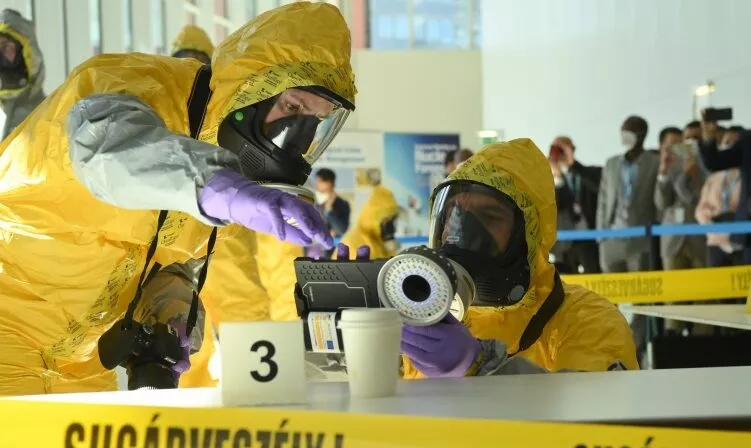Experts from the ELKH Centre for Energy Research (EK-CER) and the staff of the Criminal Technical Department of the Hungarian National Investigation Bureau of the Standby Police (KR NNI) have developed a new on-site protocol for radiant materials. The innovative location procedure, also recognized by Interpol and FBI experts, was unveiled at a conference of the United Nations International Atomic Energy Agency (UN IAEA), and will form the basis for a single IAEA international protocol in the future.

In a three-year period, researchers from the Radiation Safety Laboratory of the EK-CER Institute for Atomic Energy Research, Csaba Tóbi, Gergely Dósa and György Nagy, have developed a new procedure that will revolutionize the future testing of hazardous materials. Experts from the research group presented the protocol developed for radioactive materials at an international conference organized by the UN IAEA in Vienna.
The presentation was based on an imaginary crime where a perpetrator takes radioactive material into the basement of their apartment and then leaves their backpack contaminated with a dangerous substance behind while fleeing. During the exercise, the on-site Hungarian team had to inspect the apartment and the bag while their movements were monitored by experts from 162 countries.
The notable feature of this new procedure is that the hazardous substances are not tested after the transport but on the spot, as this is how the most information can be extracted. This allows tracing and recording of crime signs to take place directly on-site.
According to current protocol, hazardous materials must be decontaminated before being transported. Decontaminants, however, destroy genetic material residues and dactyloscopic traces. This means that it is no longer possible to gather further evidence after decontamination. For example, in the case of a telephone, this procedure may destroy the entire device.
The presentation of the new method developed by the Hungarian team was a great success. Experts from Interpol and the FBI have also praised the new protocol, which has been a real breakthrough in the direction already advocated by international experts.
Thanks to the successful presentation, the Hungarian team's new method will be the basis for the new international protocol of the UN IAEA in the future.